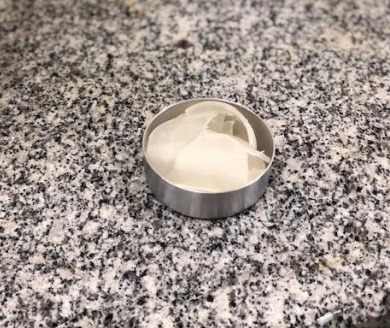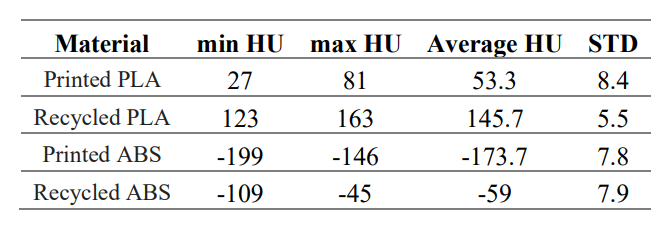Brazilian researchers seek an environmentally friendly method not only for 3D printing but to put discarded plastic to use in dosimetry, a method for measuring radiation therapy. Outlining their findings in the recently published ‘Reuse of 3D printed materials for dosimetry purposes,’ the authors focus on ABS and PLA.
While a huge variety of materials are now available on the market, ABS and PLA still prevail due to their accessibility and affordability. 3D models can be easily created and while they are helpful in the medical field for everything from educating patients to being used for diagnosing, treating, and surgical planning, they can also be used as phantoms for ionizing radiation dosimetry.
While there is a need for characterization of 3D printed samples, the researchers considered the true feasibility of recycling plastic filament for use in dosimetry. In this study, the team attempted to re-use transparent PLA and black ABS.
The researchers printed two samples with recycled PLA and ABS materials for experimentation, measuring 7cm in diameter and 9mm in thickness. The images were analyzed in a CT scanner, targeting one area of interest and measuring Hounsfield units (HU).
Overall, the team reported PLA as the winner in terms of offering ‘better performance’ due to homogeneity; even so, ABS performed fairly well despite a make up of petroleum. Heading into the experimental phase with materials, the research team had expectations that there would be problems with the ABS materials; however, the team reported ‘satisfactory’ results.
“After the readings with the ionization chamber, correction factors were applied, in order to obtain the Kerma values to evaluate the materials,” explained the team.
Ultimately, the researchers came to the conclusion that the variations found in the samples could have been a consequence of material density that resulted from the recycling process. There were numerous questions surrounding the use of typical parameters, as well as how they cause different reactions due to the differences in the material once it has been recycled.
“Different printing parameters may be applied during prototype acquisition, which influence the amount of material deposited on each printed layer and, depending on the type of printer used and the print setting, these layers may have air holes between them,” concluded the researchers the end of their study.
“Although high quality printing parameters were chosen in this paper, the results for the samples point to a difference between the densities of recycled and printed PLA/ABS samples. For more inclusive analysis, studies can be performed with samples from different printers to define the best print resolution to compare with samples of fused materials.”
What do you think of this news? Let us know your thoughts! Join the discussion of this and other 3D printing topics at 3DPrintBoard.com.
[Source / Images: ‘Reuse of 3D printed materials for dosimetry purposes’]Subscribe to Our Email Newsletter
Stay up-to-date on all the latest news from the 3D printing industry and receive information and offers from third party vendors.
You May Also Like
Further Understanding of 3D Printing Design at ADDITIV Design World
ADDITIV is back once again! This time, the virtual platform for additive manufacturing will be holding the first-ever edition of ADDITIV Design World on May 23rd from 9:00 AM –...
3D Printer Maker EVO-tech Reborn as NEVO3D — Once More With Feeling
EVO-tech was a 3D printing service and original equipment manufacturer established in 2013 and based in Schörfling am Attersee, Austria. The company produced high-quality material extrusion systems featuring linear bearings,...
3D Systems Brings 3D Printed PEEK Cranial Implant to the U.S. with FDA Clearance
For more than 10 years, 3D Systems (NYSE:DDD) has worked hand-in-hand with surgeons to plan over 150,000 patient-specific cases, and develop more than two million instruments and implants from its...
CDFAM Returns to Berlin for Second Annual Symposium
The second CDFAM Computational Design Symposium is scheduled for May 7-8, 2024, in Berlin, and will convene leading experts in computational design across all scales. Building upon the first event...




































